
The health of your back is likely to be put to the test at some point in your life. There are many ways to prevent back pain and keep your back as healthy as possible. Read my recent article “5 tips to avoid back pain” to find out more! One suggested way is to perform specific exercises to strengthen the core area, at least two to three times a week. Ideally, these should be combined with a general training regimen for optimum results. Here are five (5) exercises that will help improve the health of your back by strengthening it.
5 exercises to prevent back pain
1. The plank
The abdominal plank is a simple, accessible exercise for learning to engage the transversus abdominis. As the transversus abdominis is your natural back support belt, it’s important to know how to use it. The basic version of the plank is recommended for beginners.
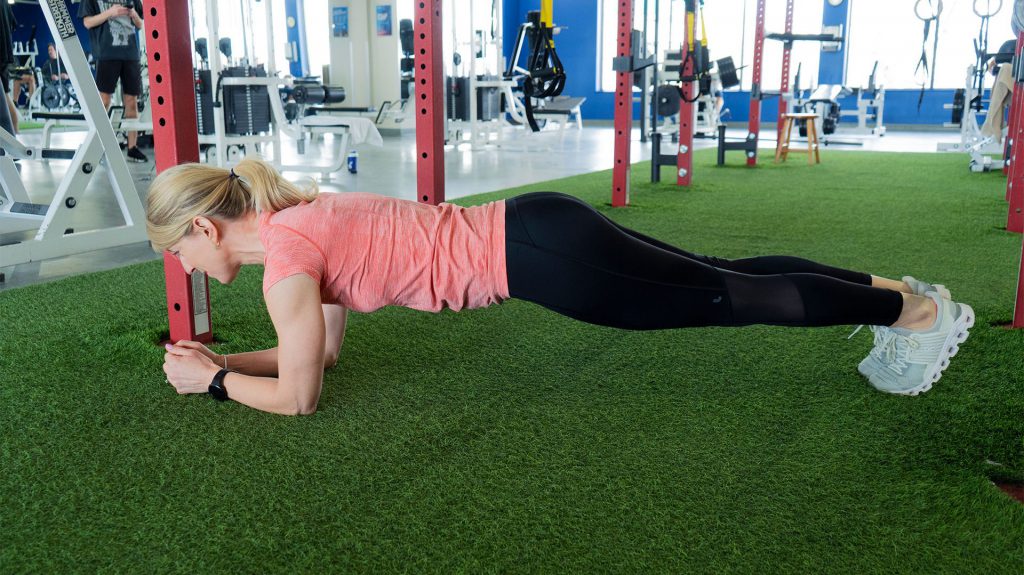
Execution: supporting yourself on your forearms and feet, keep your abs contracted, your back straight, your head in line with your spine and your elbows under your shoulders. Hold the position for 5 seconds to over a minute, depending on your fitness level. But be careful! Striving to hold the pose without achieving the right position is pointless. Respect your current level and progress gradually.
Suggested prescription: 2 sets of 15 seconds, with a 60-second break
Variations/Progression:
Once you’ve successfully held and controlled the position for 60 seconds or more, you should take the exercise to the next level. Here are two suggested variations: the plank with alternating row (using weights) and the plank with hip flexion and trunk rotation.
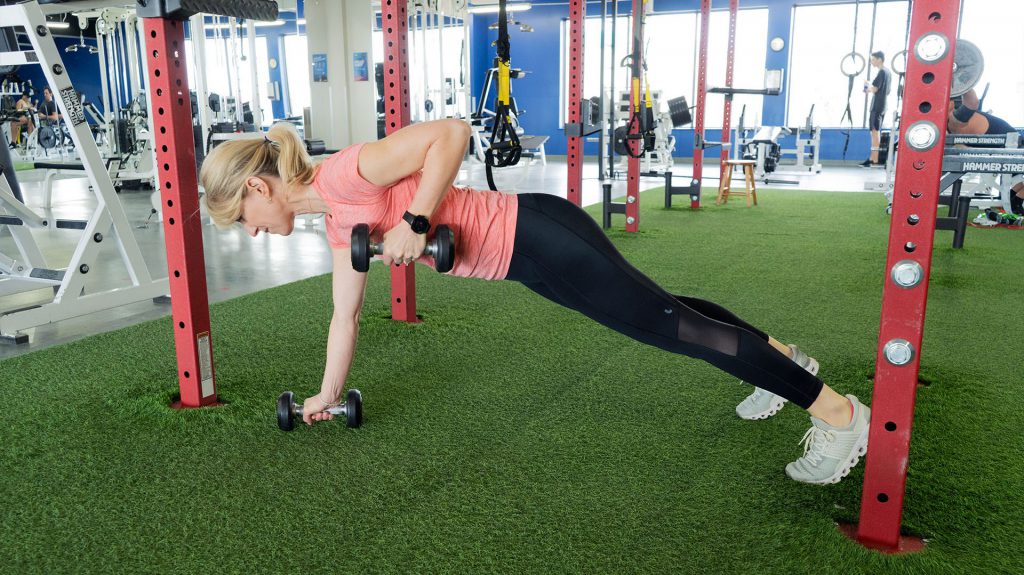
2. Side plank
In the same family as the first exercise, the side plank adds oblique and gluteus medius work to the mix, also contributing to a strong core.
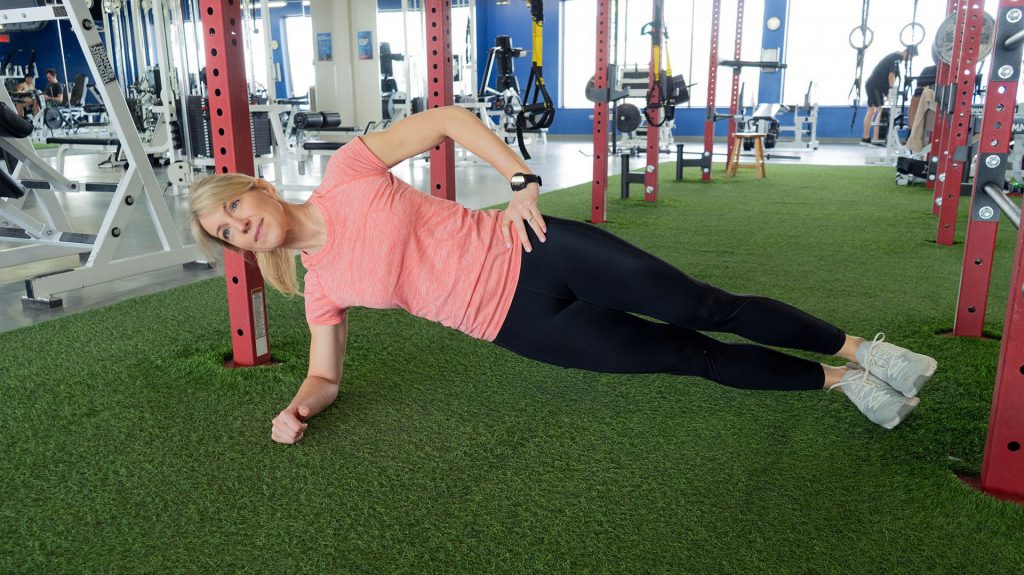
Execution: lying on your side, do a plank, resting on your forearm and feet stacked, hold the position. Keep your body upright. The duration of the exercise can be like that of the abdominal plank.
Suggested prescription: 2 sets of 10 seconds per side, with a 30-second break
Variations/Progression:
For variations, I suggest you perform a movement that will add some instability. For example, add a trunk rotation with an arm extension.
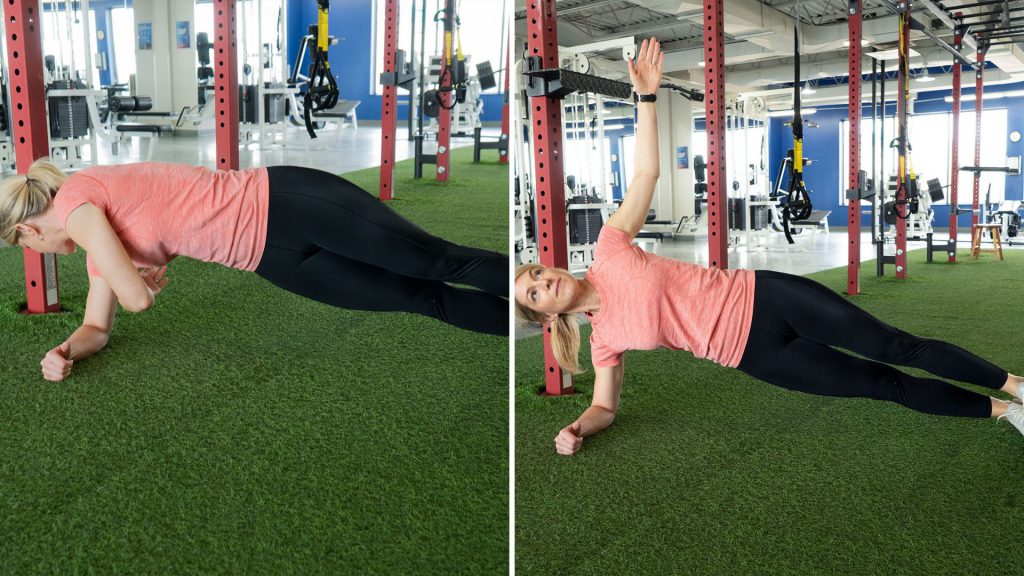
3. Pallof Press
The goal of this movement is to combine several muscles with the ability to stabilize your upper body. Transverse abdominis, obliques and gluteus medius will be solicited, but several other deep muscles will also be put to the test.
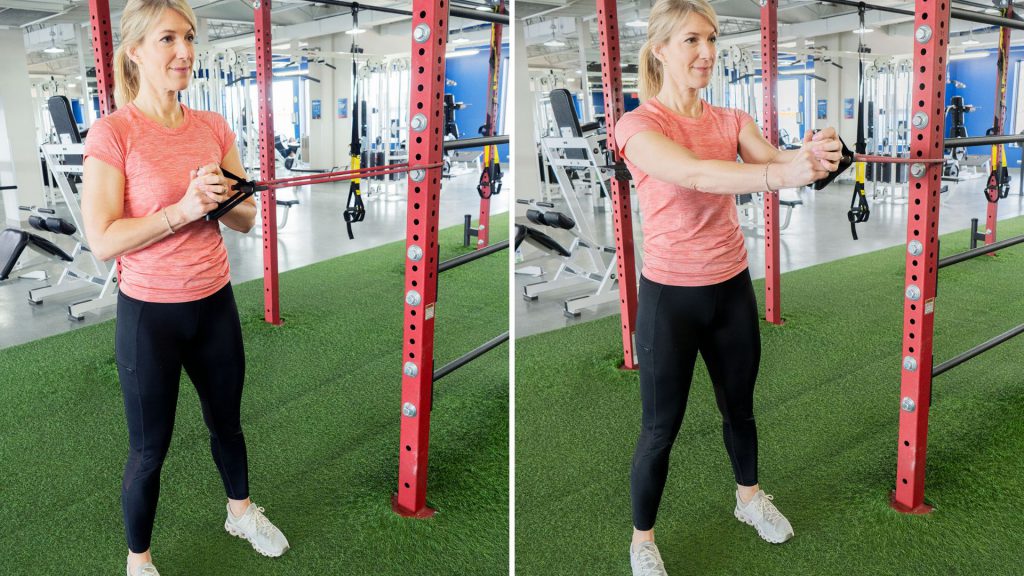
Execution: stand with feet hip-width apart. Attach a rubber band to a solid structure (or pulley) perpendicular to your position. Hold the elastic band with both hands and bring it to the center of your chest. Keep your body upright, trunk and buttocks tight. Extend your arms straight out in front of you, resisting the elastic. Return to initial position and repeat.
Suggested prescription: 2 sets of 12 reps per side, with a 30-second break.

Variations/Progression:
The appeal of this movement is the unilateral resistance forcing you to stabilize your body. An interesting progression would be to perform movements from your daily routine or sport, while controlling the lateral force you experience. Here are a few ideas, all with arms under tension: Squat with horizontal arm press, vertical arm press and lunge with arm press.
4. Targeted stretching
As some muscles lack flexibility, the progress achieved by other exercises can be greatly diminished. This is why stretching exercises must also be performed. Ideally, you should choose the right stretching exercises for your needs. Here are three (3) simple static stretches for people who work in a seated position. These stretches are designed to relax the back, open the ribcage, and facilitate correct hip positioning… stretches that are beneficial for most of us. Don’t hesitate to ask a kinesiologist about stretching for your current back pain, if it’s the case.
Foam roller assisted repeated thoracic extension
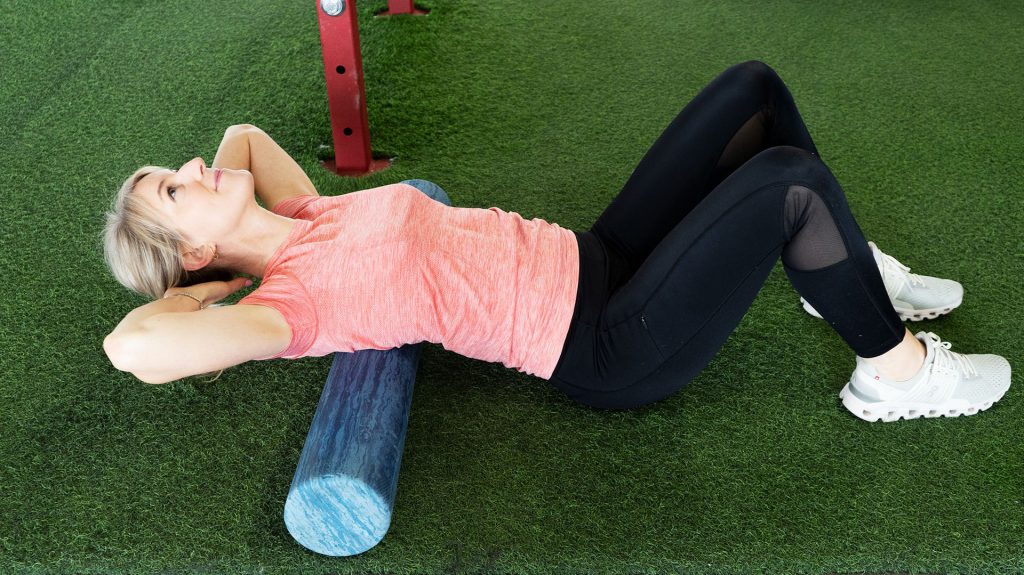
Sit on the floor with your knees bent and place a foam roller just above your lower back. Hands behind your head (point elbows skyward). It’s important to keep the ribs low (don’t let them flare out) so that the movement comes from the ribcage. There may be very little movement at first, so be patient. Hold this position, taking 3-5 deep breaths. Try to relax as you stretch.
Seated forward bend
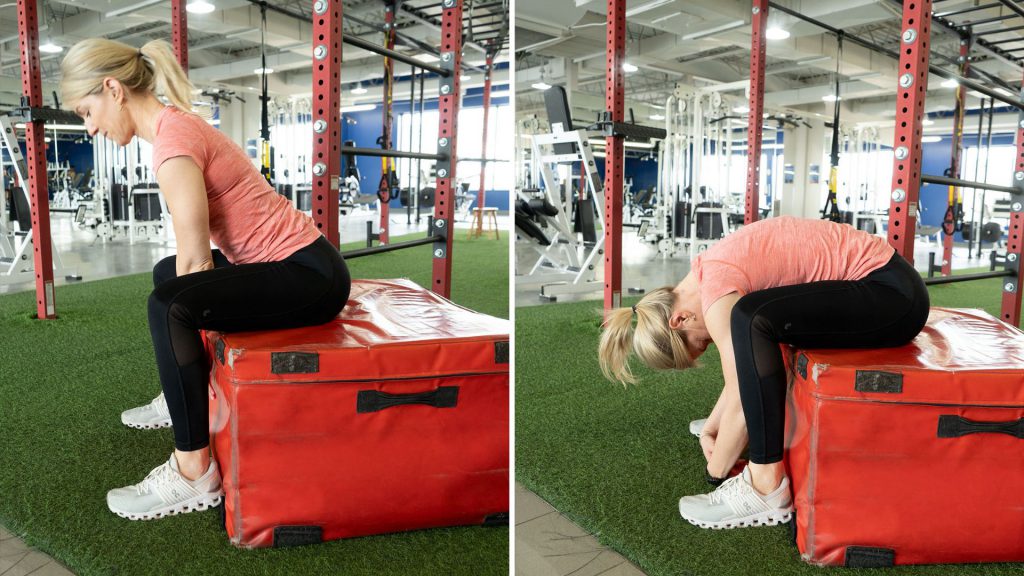
Widen your legs & place your feet flat on the floor. Slowly lean forward, dropping your torso between your knees. Relax your neck & lower your hands toward your feet.
Hip Flexor Stretch – 1/2 kneeling
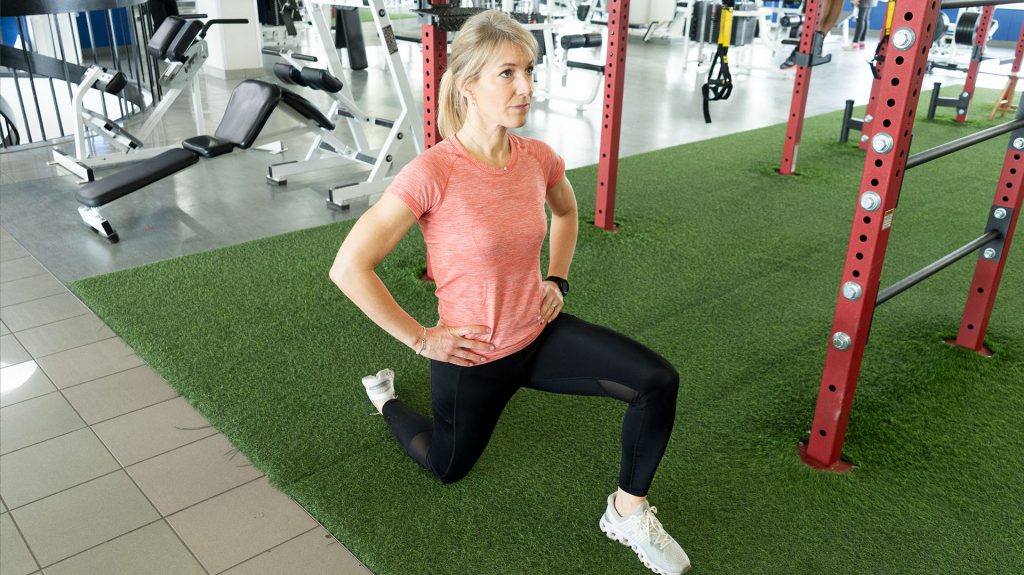
Begin in a half kneeling posture by placing one knee down directly under the hip and the other foot should be in line with the knee. While maintaining a tall spine, slowly bring your hip forward.
Suggested prescription: 2 series of 30 seconds per side, with a 30-second break
5. Dead bug
It would be tough to talk about back health without mentioning this very accessible exercise. The purpose of the exercise is to train you to keep the stabilizing muscles of your spine engaged as you make movements with your limbs. This is a true muscle control exercise.
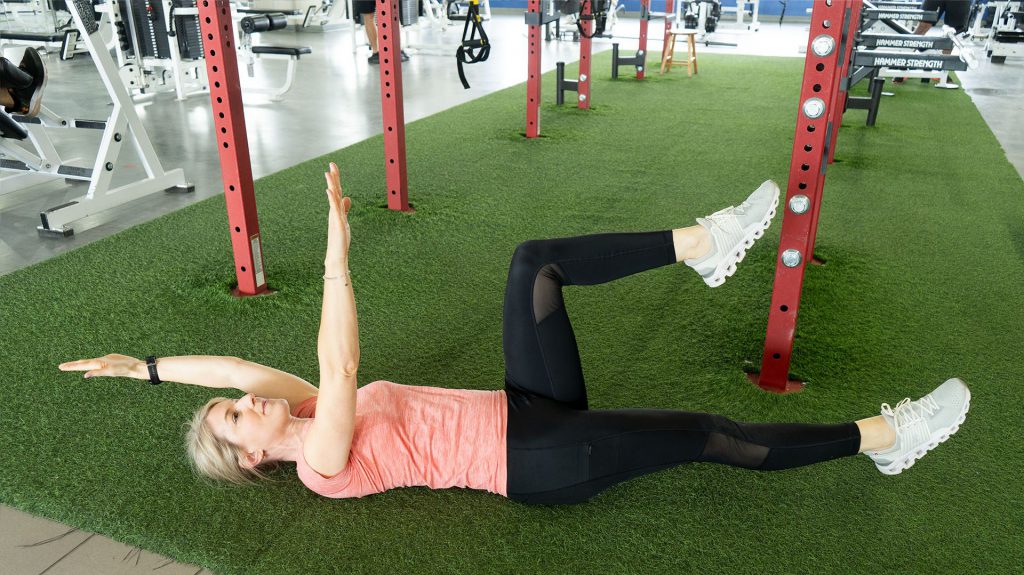
Start by lying down on your back with your knees bent (knees and hips bent at 90 degrees). With arms overhead. Extend your right leg forwards while simultaneously raising your left arm overhead in a controlled manner. Return your arm and leg to the starting position, then switch to repeat the movement on the opposite side. Keep abs tight.
Suggested prescription: 2 sets of 15 alternating repetitions, 60sec break
Variations/progression:
To test your level of control, you could either add weight resistance to the arm and leg movement to check whether you can keep the core muscles engaged despite the greater effort or, make the movement more complex without adding resistance, but using a BOSU. If it’s causing you back pain, you’re not ready for the variation! Here is an example with weight:

These exercises are not the only ones that can be of benefit to the health of your back. I recommend that you do them at least two to three times a week, or every day without any problem, if you like the effect they have on you.
Bye bye back pain! Obviously, if they’re not performed in the right way, they lose most of their impact. The aim is to improve control of the deep muscles that stabilize the body. Start by adding one or two to your routine to assess your muscle control capacity. If in doubt, consult a kinesiologist.
5 effective exercises to prevent back pain is a post from Nautilus Plus. The Nautilus Plus blog aims to help people in their journey to fitness through articles on training, nutrition, motivation, exercise and healthy recipes.
Copyright © Nautilus Plus 2024
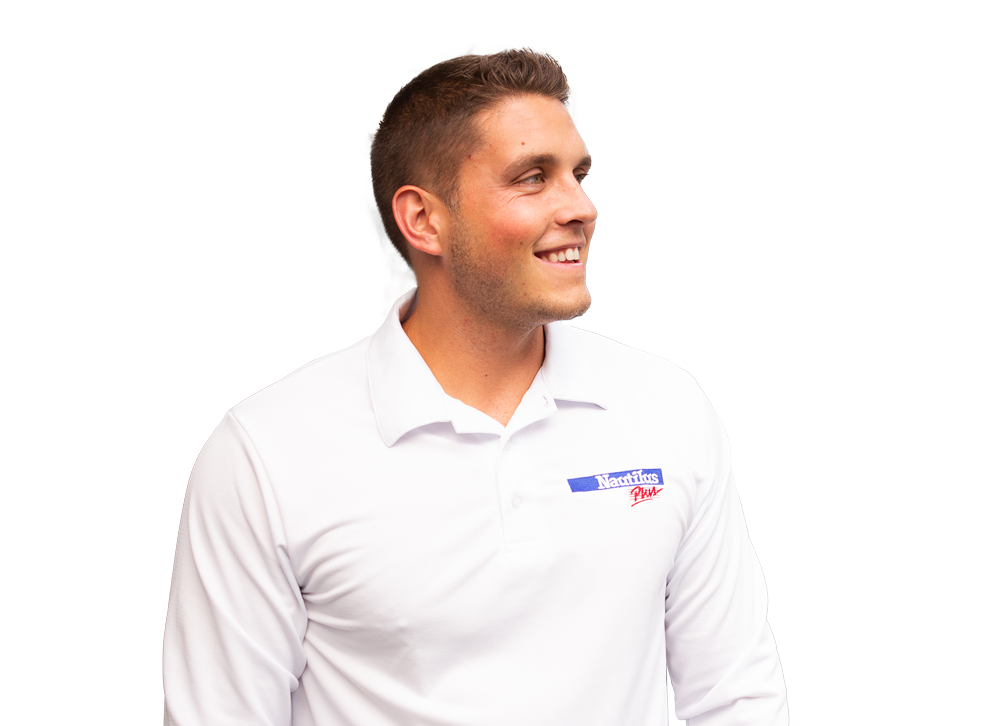
A session with a personal trainer will help you to progress!

Let's determine your fitness goals together and get some expert advice!
Make an appointment with a personal trainer
